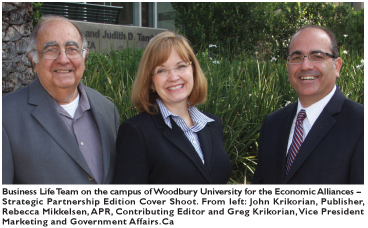|

It’s hard to believe now, but Jerry Brown once ran for President as a reformer who favored a flat tax with a 13% top federal rate. That was 1992. Nowadays in his second stint as Governor, he’s running to give California alone a higher top income-tax rate.
The incredible shifting Governor recently agreed to adjust his November ballot initiative to include an even higher top tax rate. Previously he favored an increase to 12.3% from 10.3% today. But the government-unions that live off tax revenues had threatened to sponsor their own ballot measure raising the top rate even higher.
The Governor feared that divided support might doom both. So he and the unions agreed to back only one initiative with a top rate of 13.3%. The measure would also raise the states sale tax by a quarter of a percentage point to 7.5% or more than 9% including the sales tax in some cities. Oh, and instead of lasting five years, the income-tax increase would last for seven.
All of this is said to be necessary to balance a $9.2 billion budget deficit. So what else is new? Mr. Brown expects about $9 billion in added revenue, up from $7 billion in his first package. But the state Legislative Analyst’s Office has already told Mr. Brown that he’s hallucinating to think he can get that much money from a corner of the taxpayer base.
The top 1% in California pay between one third and half of all state income tax revenues, depending on the condition of the economy. California already has the fourth highest income tax in the nation, behind Hawaii and Oregon at 11% and New York City at nearly 13%. The national average for the top income tax rate is under 6%. Nine states have no income tax.

So far the privilege of living in California, a millionaire would pay close to $125,000 a year more income tax than someone in Nevada, Texas or Florida. A Californian earning $10 million would pay an extra $1 million or more tan if she moved to a state without an income tax, or nearly $500,000 than an average tax state.
Even Mr. Brown, in one of his saner moments earlier this year, said that relying on millionaires to pay the bills causes “more volatility” in revenue collections, which has meant “a more or less constant state” of deficits. He was right. Capital gains collections collapsed to $734 million in 2009-10 from $1.6 billion in the boom years. So why would Mr. Brown make the problem worse?
One of the last states to have a tax rate as high as California is proposing was Delaware in the 1970s. Its rate hit 19.8%. Then-Governor Pete du Pont cut the rate to 10.3% in 1979 and later to 5.95% and after five years the state’s revenues had nearly doubled and its credit rating went from the worst to one of the best.
None of these facts matter to Mr. Brown or his allies because the tax increase is simply about the political power to deliver money to the interests that live off government. Mr. Brown’s budget raises spending in 2013 by 7% and by roughly 5% on average over the next four years. Every dollar of higher taxes is accompanied by roughly a dollar increase in spending, If the revenues don’t materialize as promised from this tax increase, they’ll raise taxes again—and again, and….
California voters will have to decide weather to ratify this welfare-state redistribution one more time, or finally force the state to confront the limits of tax and spend politics. (Reprinted: The Wall Street Journal March 26, 2012)

|